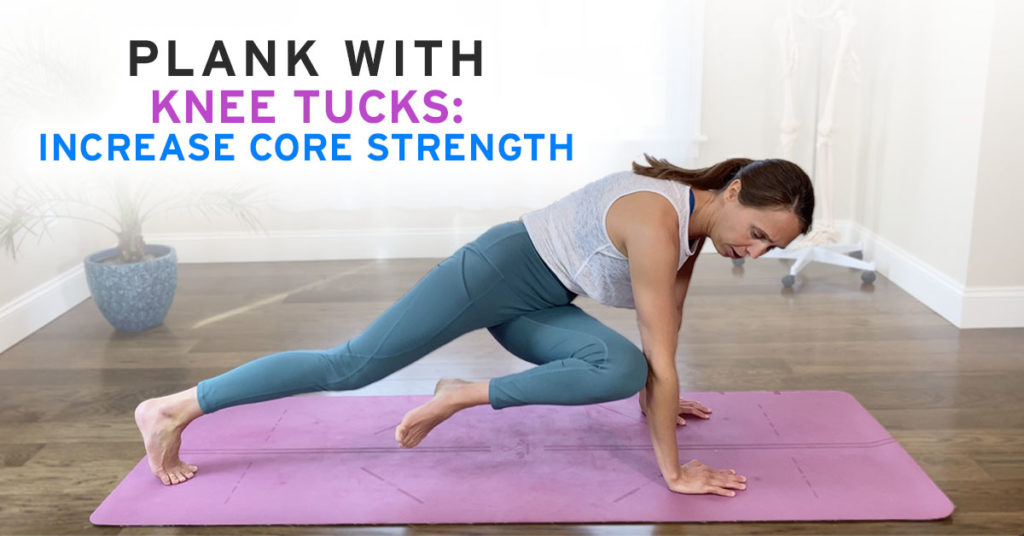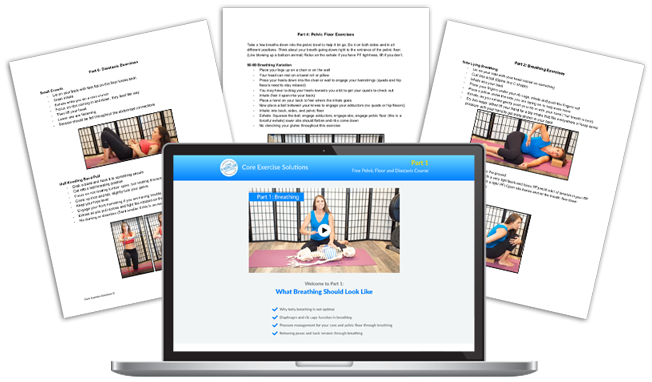Plank with Knee Tucks: Increase Core Strength
What Are Plank Knee Tucks?
Planks with a knee to elbow are an advanced core exercise that start in the position of a plank and then move through to a knee touching the opposite arm. Even though they are advanced, sometimes it’s easier to manage pressure by moving through the plank rather than holding it without moving. Check out the advice below for helpful tips on executing this exercise for maximum benefit!
Plank Knee Tucks Benefits
I don’t recommend starting this exercise newly postpartum because it’s an advanced exercise. This would be more beneficial for someone who has fully healed their diastasis and can handle front loading pressure, or someone who can regulate pressure down on their pelvic floor.
If you’re in a place where you’re ready for more advanced core training, then this is one of my favorite exercises.
I love the cross body action here because it includes all the abdominal muscles to complete the exercise and get the knee all the way to the elbow.
- It takes both internal and external obliques to twist far enough to get the knee fully across to the opposite arm.
- It takes the obliques and TAs (deep abdominals) to keep the rectus from doming.
- It takes the rectus, internal obliques and TAs to help bring the pelvis into a posterior tilt for the knee to reach the opposite arm, making this a great exercise for working all the abdominal muscles at one time.
I also find the knee to elbow plank exercise to be less pressure on the spine and discs, because you’re up against gravity helping to create more lengthening along the spine versus a twisting sit-up type exercise where you’re on your back.
How To Do A Plank With Knee Tuck?
- Start in a push-up position
- Think about engaging your lats with your abs by gently pulling down through your armpits as you move
- Bring your opposite knee to touch the opposite forearm
- Think about tucking your hips under by pulling up on your lower abdominals
- Line of sight should always be over the tips of fingers, try to keep from pushing backwards and over-activating your upper traps
Exhale before you start the motion to come down and across. Think about tucking your ribs in to help you rotate across as you draw up on your lower abs. Gently engaging your pelvic floor can help increase lower abdominals and prevent too much pressure from going down.
Inhale on the way back to your starting position.
Common Plank With Knee Tuck Mistakes
Grab your phone and take a quick video of you doing the exercise. That’s the best way to see common mistakes!
Reasons you’re having trouble getting your knee to reach your elbow:
The first thing I’d love for you to take a look at is your back. Watch the curve of your spine. Does your lower back arch more, or does it round? You’ll want your low back to round slightly as you lift your lower abs. This helps to pull your pelvis under so your knee can reach your elbow. It will also help you get more abdominal work out of this exercise! “Holy moly ab burn!”
Arching your back also tells me that you’re overusing your hip flexors. This could increase pressure in a negative way in your abdominal cavity. Tucking your pelvis under by using your abdominals helps to ensure that you’re managing pressure properly.
The next thing I’d like for you to check is whether you are pushing backwards. Ahhh, those neck muscles. The upper traps just love to try and take over. For this exercise I want you to gently pull your shoulders away from your ears, keeping your eyes slightly over your fingers. Staying forward over your fingertips will help calm down your upper traps and make it easier to get your knee to your elbow.
Check out the video below to see all these tips in action.
Have fun with this advanced core exercise!
Working with pregnant and postpartum clients/patients?
This 6-part course offers key takeaways on breathing, pelvic floor strengthening and diastasis recovery. Sign up and start learning today!


